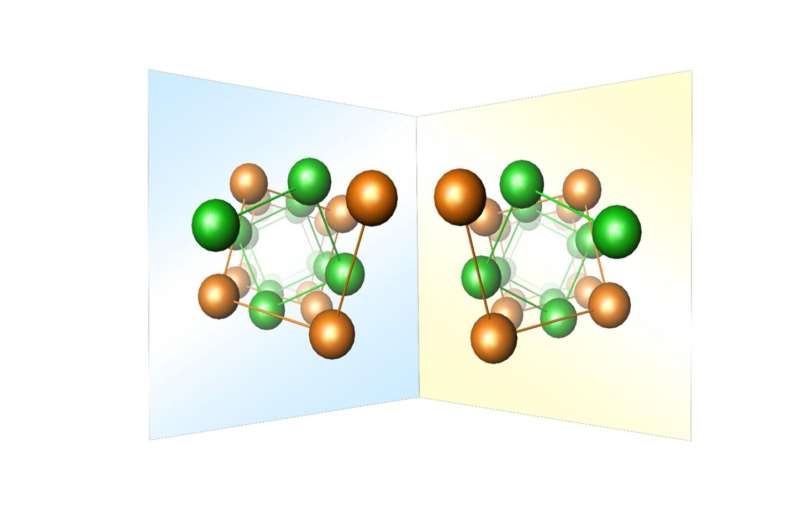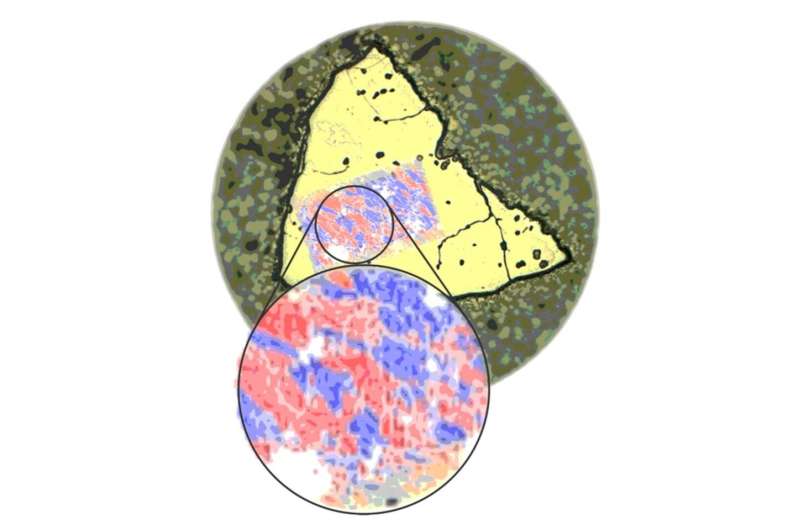Enantiomorph distribution maps for metals and metallic alloys

Left- or right-handedness is a symmetry property that many macroscopic objects also exhibit and which is of immense importance, particularly for the bioactivity of organic molecules. Chirality is also relevant for physical or chemical properties such as optical activity or enantioselectivity of crystalline solids or their surfaces. In the case of chiral metallic phases, unconventional superconductivity and unusual magnetic ordered states are linked to the chirality of the underlying crystal structure. Despite this connection between chirality and the properties of a material, detection is often difficult because left-handed and right-handed structural variants can cancel each other out or at least weaken chirality effect.
It is not always possible to prepare chiral materials that contain only one of the two structural variants. More often, both structural variants are present in a polycrystalline material. For sys-tematic investigations, it is therefore important to be able to determine the handedness with good spatial resolution.
In a new study, it is shown that the EBSD (Electron Backscatter Diffraction) method can be used to determine the distribution of enantiomorphic structural variants not only in polycrystalline materials of multicomponent phases, but also for the chiral elemental structure β-Mn. The difference between multicomponent crystal structures and the elemental structure is therefore of particular importance, since the X-ray diffraction method, which is usually used to determine handedness, does not provide any information of the handedness for a chiral elemental structure such as β-Mn.

EBSD is an established method to determine the local crystal orientation in a polycrystalline material by means of Kikuchi lines. The EBSD investigation is carried out with a scanning electron microscope. It is therefore a comparatively simple method for determining the local crystallographic properties of a polycrystalline material. The Kikuchi lines are formed by diffraction of the electrons on a strongly tilted, flat surface. However, conventional methods for evaluating the EBSD pattern do not allow any conclusion about the handedness of a phase. Only the consideration of dynamic electron multiple scattering in the simulation calculations yields differences in the Kikuchi lines of the two enantiomorphs. An assignment of the handedness is made based on the best agreement of the experimental EBSD pattern with one of the two simulated patterns.
These investigations were carried out on the phases β-Mn and the structurally closely related multicomponent compound Pt2Cu3B. The distribution of enantiomorphs was determined from the EBSD pattern for both phases, while the X-ray diffraction on the Xenon- FIB (Focused ion beam) cut crystals allowed an assignment for the ternary phase only. The EBSD-based determination of the distribution of the enantiomorphs in a polycrystalline material significantly simplifies the preparation of materials with defined handedness.
More information: Ulrich Burkhardt et al, Assignment of enantiomorphs for the chiral allotrope β-Mn by diffraction methods, Science Advances (2021). DOI: 10.1126/sciadv.abg0868
Journal information: Science Advances
Provided by Max Planck Institute for Chemical Physics of Solids




















